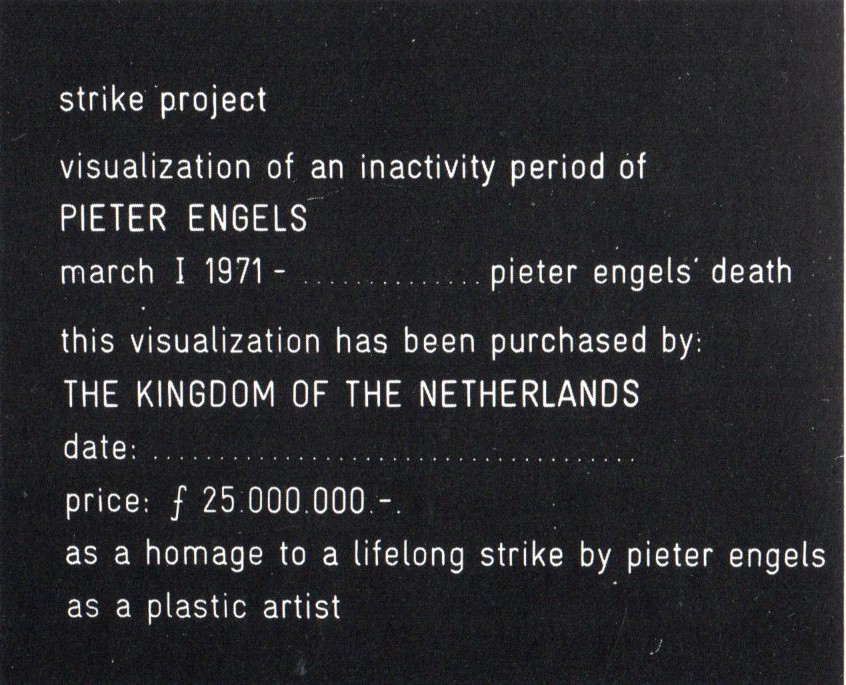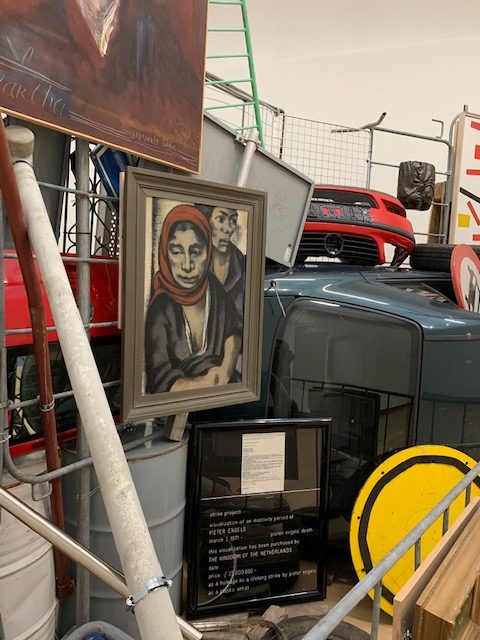

ETI 1969
Then came ETI, English Third Institute for research in subcultural brainbuilding (1969).(research in subcultural brainbuilding). ETI, sold ideas rather than products. The most striking action he carried out for this institute is the Strike Project from 1971, in which he offered the Dutch state, through minister Marga Klompé, a lifelong strike as a visual artist in exchange for a sum of fl 25,000000.
In addition, there were a number of visualizations of inactivity periods and denial projects(project for visible negation, place for no chair)and art-fiction(sky-event) and transfunctional projects
AHMET OGUT BAKUNINSBARRICADE STEDELIJK MUSEUM AMSTERDAM

When Prussian troops wanted to crush the socialist uprising in Dresden in 1849, anarchist thinker Mikhail Bakunin suggested that the paintings from the National Museum’s collection be placed in front of the barricades. According to Bakunin, the Prussian soldiers would not dare to destroy these precious works of art. Inspired by Bakunin’s never realized proposal, Ahmet Öğüt created a barricade of fences, car wrecks, building materials and other objects often found in public spaces, combined with a number of works he selected from the Stedelijk’s collection. As part of the work, Öğüt and a lawyer drafted a contract that is displayed alongside the installation. The contract states that during a future uprising, citizens can call on the barricade – including the artworks. The agreement is only valid if the museum actually signs the contract when it purchases Öğüt’s work.


“In the Presence of Absence” at the Stedelijk Museum Amsterdam @stedelijkmuseum . Bakunin’s Barricade is inspired by Bakunin’s never realized proposal in 1849. We are using original artworks from the Stedelijk Museum’s Collection including works by Nan Goldin, Marlene Dumas, Käthe Kollwitz, Else Berg, Kazimir Malevich, Pink de Thierry, Pieter Engels, Jan Theodoor Kruseman. In addition parts of work of Timo Demollin from the current exhibitions. A contract, prepared in collaboration with a lawyer, stipulates that the barricade may be requested and deployed during extreme economic, social, political, transformative moments and social movements after the work enters an institutional collection.
With Bakunin’s Barricade (2015), Öğüt asks questions about the value of art in times of socio-political upheaval. May valuable works of art be used to defend democratic values? To whom do these artworks from public collections belong? Which cultural heritage should be preserved and who decides?
Bakunin’s Barricade not only questions what role museums are willing to play when it comes to social inequality or other injustices, but also raises a tension, especially in the current period of global protests. Where does a work of art and the role of the artist begin and end? Öğüt’s oeuvre starts from the conviction that art can help to question the world around us and the established order and, where necessary, to challenge it.